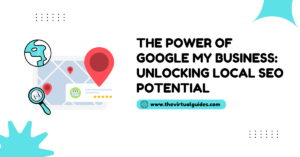Imagine opening your inbox and finding emails that speak directly to your needs and interests.
Feels good, right? That’s the power of personalized email marketing.
In this blog, we’ll explore the latest trends in personalized email marketing and how you can use them to enhance customer engagement and conversions.
Table of Contents
- Why Personalization Matters in Email Marketing
- Trend 1: Dynamic Content
- Trend 2: Behavioral Segmentation
- Trend 3: AI and Machine Learning
- Trend 4: Hyper-Personalization
- Trend 5: Real-Time Personalization
- Trend 6: Personalized Product Recommendations
- Trend 7: Omnichannel Personalization
- Best Practices for Personalized Email Marketing
- Conclusion
Let’s dive in…
Why Personalization Matters in Email Marketing
Understanding the Importance of Personalization
Personalization in email marketing means tailoring your messages to each subscriber based on their behaviors, preferences, and demographics. This approach can significantly improve open rates, click-through rates, and overall engagement.
Did you know that personalized emails deliver 6x higher transaction rates compared to generic ones?
Benefits of Personalized Email Marketing
- Increased Engagement: Personalized emails capture attention and encourage interaction.
- Higher Conversion Rates: Relevant emails lead to more conversions.
- Improved Customer Loyalty: Personalized communication builds stronger relationships.
- Better ROI: Higher engagement and conversion rates lead to a better return on investment.
Trend 1: Dynamic Content
What is Dynamic Content?
Dynamic content changes based on the recipient’s data, behaviors, or preferences. This can include personalized product recommendations, tailored offers, and customized messages.
How to Implement Dynamic Content
Use tools like Mailchimp or ActiveCampaign to create dynamic content blocks in your emails. Segment your audience based on their behaviors and preferences, and use dynamic content to deliver personalized experiences.
Trend 2: Behavioral Segmentation
What is Behavioral Segmentation?
Behavioral segmentation involves dividing your email list into segments based on subscribers’ behaviors, such as their purchase history, website interactions, and email engagement.
Benefits of Behavioral Segmentation
- Relevance: Target subscribers based on their behaviors for more relevant emails.
- Improved Engagement: Behaviorally segmented emails have higher open and click-through rates.
- Increased Conversions: Aligning emails with recipient behaviors leads to higher conversions.
How to Implement Behavioral Segmentation
Use your email marketing platform’s segmentation features to create segments based on behaviors. For example, you can segment users who have made a purchase in the last 30 days, visited specific pages on your website, or clicked on previous email campaigns.
Trend 3: AI and Machine Learning
The Role of AI and Machine Learning in Email Marketing
Artificial Intelligence (AI) and Machine Learning (ML) are transforming email marketing by enabling more advanced personalization. AI can analyze vast amounts of data to predict subscriber behaviors and preferences, allowing for more targeted and effective email campaigns.
How to Use AI and ML in Email Marketing
- Predictive Analytics: Use AI to predict future behaviors based on past data. This can help you send the right message at the right time.
- Personalized Content: AI can generate personalized content for each subscriber based on their preferences and behaviors.
- Automated Segmentation: AI can automatically segment your email list based on complex data patterns.
Trend 4: Hyper-Personalization
What is Hyper-Personalization?
Hyper-personalization takes personalization a step further by using real-time data and AI to deliver highly relevant content. This approach considers a wide range of factors, including browsing history, purchase behavior, and even real-time location.
Benefits of Hyper-Personalization
- Highly Relevant Content: Hyper-personalized emails are tailored to the individual’s immediate needs and preferences.
- Increased Engagement: Recipients are more likely to engage with emails that are highly relevant to them.
- Better Customer Experience: Hyper-personalization provides a seamless and personalized customer experience.
How to Implement Hyper-Personalization
Use AI-powered tools to analyze real-time data and deliver hyper-personalized content. Tools like Persado can help you create hyper-personalized email campaigns that resonate with your audience.
Trend 5: Real-Time Personalization
What is Real-Time Personalization?
Real-time personalization involves delivering content that changes based on real-time data. This can include location-based offers, time-sensitive promotions, and real-time updates.
Benefits of Real-Time Personalization
- Immediate Relevance: Real-time personalization ensures that the content is immediately relevant to the recipient.
- Higher Engagement: Real-time offers and updates can drive immediate action from recipients.
- Enhanced User Experience: Real-time personalization provides a more engaging and interactive user experience.
How to Implement Real-Time Personalization
Use tools like Movable Ink to create emails that adapt in real-time. For example, you can show different content based on the recipient’s current location or the time they open the email.
Trend 6: Personalized Product Recommendations
The Power of Personalized Recommendations
Personalized product recommendations can significantly increase sales and customer satisfaction. By showing products that are relevant to the recipient’s preferences and behaviors, you can drive more conversions.
How to Implement Personalized Recommendations
Use AI-powered tools to analyze purchase history and browsing behavior. Tools like Recombee can help you generate personalized product recommendations for each subscriber.
Trend 7: Omnichannel Personalization
What is Omnichannel Personalization?
Omnichannel personalization involves delivering a consistent and personalized experience across all channels, including email, social media, and your website.
Benefits of Omnichannel Personalization
- Consistent Experience: Providing a consistent experience across channels helps build trust and loyalty.
- Increased Engagement: Omnichannel personalization ensures that the recipient is engaged regardless of the channel they use.
- Better Insights: Analyzing data across channels provides deeper insights into customer behaviors and preferences.
How to Implement Omnichannel Personalization
Use tools like HubSpot to integrate your marketing efforts across channels. Ensure that your messaging and personalization strategies are consistent across email, social media, and your website.
Best Practices for Personalized Email Marketing
Collect and Use Data Responsibly
Collect data ethically and transparently. Ensure that subscribers know how their data will be used and provide options to opt-out if they choose. Use this data responsibly to deliver personalized experiences.
Segment Your Audience
Effective segmentation is key to personalization. Use demographic, behavioral, and psychographic data to create segments that allow for targeted and relevant messaging.
Test and Optimize
Regularly test different elements of your email campaigns, such as subject lines, content, and CTAs. Use A/B testing to determine what works best and continuously optimize your emails for better performance.
Focus on the User Experience
Ensure that your emails are visually appealing, easy to read, and provide value to the recipient. Use responsive design to ensure that your emails look great on all devices.
Personalize Beyond the First Name
While addressing recipients by their first name is a good start, true personalization goes much deeper. Use data to tailor the entire email experience, from the subject line to the content and offers.
Leverage Automation
Use automation tools to send timely and relevant emails based on subscriber behaviors. Automated workflows can help you nurture leads, welcome new subscribers, and re-engage inactive users.
Provide Value
Ensure that every email you send provides value to the recipient. This could be in the form of helpful information, exclusive offers, or personalized product recommendations.
Respect Privacy
Be mindful of privacy regulations such as GDPR and CCPA. Ensure that you have the necessary permissions to use subscriber data and provide easy ways for subscribers to manage their preferences.
Conclusion
Personalization in email marketing is no longer optional; it’s a necessity for businesses looking to engage customers and drive conversions. By leveraging the latest trends and best practices in personalized email marketing, you can create more relevant, engaging, and effective email campaigns.
Ready to take your email marketing to the next level?
Partner with The Virtual Guides, the best digital marketing company, and let our team of online marketing experts help you achieve your goals.
Contact us today to learn more about our email marketing services and how we can assist you in staying ahead of the competition.




